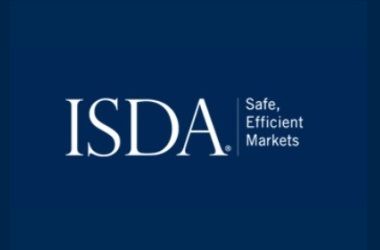A recalibration of over-the-counter derivatives reforms has dominated talks at ISDA’s annual general meeting in Lisbon as European policy makers aim to simplify rules stemming from the European Market Infrastructure Regulation while US regulators embark on plans to overhaul Dodd-Frank.
Steven Maijoor, chair of the European Securities and Markets Authority, told delegates that almost 10 years on from the global financial crisis, concerns over the impact of regulation in the US$483trn OTC swaps market should not continue to dominate the work of industry participants
“I think EMIR has been a successful reform of the derivatives market, this is not to underestimate how much time it still takes from your side, but I think we’re getting there,” said Maijoor.
He said an expected 10-year implementation period for new reforms stemming from 2009’s G20 agreement in Pittsburgh, suggesting that the final regulatory framework should be in place in the next two years, had been assisted by renewed efforts by global lawmakers to review and simplify complex, duplicative and often conflicting legislation.
“If you look at the big change that the reforms have had for the OTC derivatives markets and how major the impact was, it’s only logical that we look at the issue of how we can further streamline and improve the regulatory framework for OTC derivatives markets again,” said Maijoor.
Maijoor welcomed last week’s proposals from the European Commission that aim to simplify EMIR. Those changes include the removal of non-financial counterparties from the swaps reporting obligation, lifting the smallest financial counterparties out of mandatory clearing and a three-year exemption for pension funds to begin clearing their swaps.
The recalibration comes as firms prepare for a new set of requirements set to go live under MiFID II, which includes trade execution rules forcing the most liquid swaps and securities to be executed over exchange-like platforms.
“With the US administration focused on recalibrating regulation and with the EMIR review and implementation of MiFID II there’s a real opportunity here to start the conversation,” said Darcy Bradbury, a managing director at DE Shaw and ISDA board member. “These markets exist only to support the real economy and if people aren’t able to use certain financial instruments that are vital to hedging and investing, then that can’t be the right outcome.”
KEEPING IT GLOBAL
According to ISDA CEO Scott O’Malia, the cross-border impact of rules remains crucial to the efficient functioning of derivatives markets. He called on European regulators to reach a quick substituted compliance decision around the new trade execution rules as they prepare to roll out MiFID II.
“The derivatives market works best when it is global,” he told delegates. “If cooperation between regulators fails, we may see markets fragment, turning that liquidity pool into liquidity puddles. That means less choice for end users, less efficiency and potentially higher costs.”
He said that the substituted compliance process would be assisted by amendments to the SEF rules, which could bring them in line with other markets.
“We are optimistic about the CFTC’s new reform agenda, which includes bringing more flexibility to SEF trading,” he told delegates.
Further detail around that agenda is expected to emerge when acting CFTC chairman Christopher Giancarlo addresses delegates on Wednesday.
CLEARING REVOLUTION
Participants also highlighted the huge change that has taken place across the swaps market in response to post-crisis reforms, ensuring that activity has not transferred to listed futures-style alternatives as many predicted in the wake of the G20 agreement.
Daily notional volume of swaps reported to US trade repositories grew from US$550bn in 2014 to just under US$640bn in 2016, while the first quarter of 2017 has seen over US$780bn of interest rate derivatives traded daily.
On a business roundtable, Daniel Maguire, global head of rates and FX derivatives at LCH, said that average daily notional cleared at the clearinghouse almost quadrupled to US$2.9trn between 2010 and 2016. Over the same period, the number of clearing members has jumped from 35 to 107. Highlighting greater adoption of clearing by buyside firms, the total number of clients clearing their swaps, climbed from 16 to 767.
“The biggest surge has been on the buyside and that’s beyond the mandate. Clients are looking to clear as much as possible,” said Maguire, who said that cleared volumes jumped 10% in 2016 at the same time as the total volume of OTC notional outstanding fell by 15%.
New requirements for counterparties to exchange daily variation margin against swaps that are not cleared through central clearinghouses have also contributed to a jump in voluntary clearing.
“Firms are now clearing more than they are mandated to clear – a shift driven by operational issues, netting efficiencies and the economic impact of margin and capital requirements for non-cleared trades,” said O’Malia.
